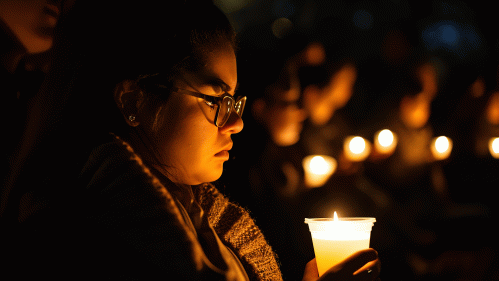Firearm Access and Gun Violence Exposure Are Common in Black and Native Communities

These groups have experienced “heartbreaking levels of gun violence victimization” in the U.S., says Rutgers expert
A New Jersey Gun Violence Research Center study is the first to provide nationally representative data on gun use, storage and violence within Black and American Indian/Alaskan Native (AIAN) families.
Both Black and native communities have seen increasingly elevated rates of gun violence victimization, including homicide and suicide, according to the Centers for Disease Control and Prevention. In recent years, minorities have become more represented among new firearm owners. Despite this, research on firearm access, storage and use has focused on samples of white adults. This prevents understanding the access Black and native individuals have to firearms, whether they are stored securely and carry them outside their homes.
“Black and American Indian/Alaskan Native communities have experienced heartbreaking levels of gun violence victimization, but research has told us very little about the extent to which individuals in these communities have access to firearms and how they interact with firearms in their daily lives,” said Michael Anestis, executive director of the New Jersey Gun Violence Research Center at Rutgers Health and the lead author of the study appearing in the journal JAMA Network Open. “If we want to address gun violence within these communities, we need to first understand the ways in which the individuals within the communities are engaging with firearms.”
Rutgers researchers surveyed nationally representative samples of English-speaking Black and native adults in the late spring of 2023 and assessed how many individuals have access to firearms, what types of firearms they have, why they have firearms and how they store them. They also assessed how frequently they carry their firearms, why they do so, and in what locations. Finally, researchers assessed the extent to which individuals in these communities have been victimized by gun violence, know others who have been victimized by gun violence or have experienced incidents of gun violence in their neighborhoods.
The researchers found nearly 1 in 3 (30.4%) Black adults and nearly half (45.5%) of AIAN adults reported keeping firearms in their home. In both samples, home protection was the most common reason for firearm access and handguns were the most frequently owned type of firearm. Although about half of the individuals in each sample reported regularly storing firearms securely, a nearly equal proportion reported never using secure storage.
The researchers also found nearly 1 in 5 adults in each sample regularly carry firearms outside their homes. Self-protection was the most common reason for doing so, but a number of individuals in both groups reported carrying firearms to protect others and because they lack faith in the police.
In both samples, gun violence exposure was startlingly common: Numbers of both Black (21.7%) and native (30.2%) adults reported they had been threatened with a firearm and about 40% in both groups reported personally knowing someone who had been shot.
To better understand how universal these results are within each sample, the authors examined the extent to which findings varied based upon sex, age, geographic location, rurality and political beliefs.
Although many findings remained similar across each of these subgroups, the authors noticed some variability.
“Our findings show that firearms are frequently present in the homes of Black and American Indian/Alaskan Native adults, with most owning for personal protection, many storing the firearms unsecured, and a meaningful group regularly carrying the firearms when they leave their homes,” Anestis said,
“In addition to the frequent presence of and interactions with firearms, both communities endorsed high levels of gun violence exposure,” he continued. “What this tells me is that firearms are, in many cases, dramatically impacting the daily lives of individuals in these communities and our efforts to prevent gun violence – including through the promotion of secure firearm storage – much adapt to fit the reality of firearms within these particular communities.”


